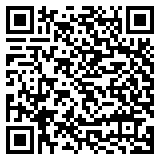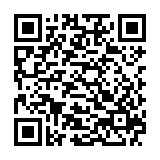Healthcare is a universal need, but communication barriers can make it challenging for certain groups to access quality care. For Deaf and hard-of-hearing individuals, sign language interpreters bridge the gap, ensuring that they receive the same standard of care as hearing patients. As awareness grows and legal mandates strengthen, the demand for sign language interpreters in healthcare is reaching new heights. Let’s explore the factors driving this trend and why it’s more important than ever to have sign language interpreters in healthcare.
The Role of Sign Language Interpreters in Healthcare
Breaking Down Barriers
Sign language interpreters act as the voice and ears for patients who use sign language to communicate. They ensure that medical professionals understand the patient’s concerns while accurately relaying diagnoses, treatment plans, and medical advice back to the patient. This two-way communication is vital for delivering effective and empathetic care.
Promoting Equal Access
Healthcare should be a fundamental right, not a privilege. Interpreters help uphold this principle by making sure that Deaf patients aren’t left out of critical discussions about their health. From routine check-ups to emergency surgeries, their presence ensures equal access to medical services.
Why the Demand Is Growing
Increasing Awareness of Legal Rights
Laws like the Americans with Disabilities Act (ADA) in the United States require healthcare providers to offer reasonable accommodations for individuals with disabilities, including sign language interpretation. Similar legislation exists worldwide, driving demand for interpreters who can meet these legal requirements.
A Growing Deaf Population
With an estimated 70 million Deaf people worldwide, the need for accessible healthcare is immense. As populations grow and age, the demand for qualified interpreters is only expected to increase.
Complex Medical Procedures
Modern medicine involves complex procedures and specialized treatments. These require clear communication to ensure patients understand their options and can give informed consent. Sign language interpreters are critical in making this possible for Deaf patients.
Challenges in Meeting the Demand
Shortage of Qualified Interpreters
There aren’t enough certified sign language interpreters to meet the rising demand. Training programs can be intensive, requiring fluency in sign language, cultural competence, and knowledge of medical terminology.
High Stress and Burnout
Interpreting in healthcare settings can be emotionally taxing. Interpreters often deal with life-and-death situations, adding to the stress of an already demanding role. This contributes to high turnover rates in the profession.
Cost Concerns for Providers
While essential, hiring interpreters can be expensive for healthcare providers. Balancing the cost of interpretation services with the need for accessibility remains a challenge, especially for smaller clinics and rural hospitals.
Solutions and Innovations
Embracing Technology
Remote interpreting services, also known as Video Remote Interpreting (VRI), are becoming increasingly popular. VRI allows interpreters to assist patients via video calls, making it easier to provide services in areas where in-person interpreters are unavailable.
Encouraging Certification Programs
Expanding and promoting certification programs for sign language interpreters can help address the shortage. Scholarships, grants, and awareness campaigns can encourage more individuals to pursue this vital career.
Collaborative Efforts
Partnerships between hospitals, interpreter agencies, and advocacy organizations can streamline the process of providing interpreters. These collaborations can help reduce costs and improve access for patients.
The Impact of Interpreters on Patient Outcomes
Better Understanding of Medical Information
Patients who can communicate effectively with their healthcare providers are more likely to understand their diagnoses and treatment options. This leads to better health outcomes and higher patient satisfaction.
Reduced Medical Errors
Miscommunication is a leading cause of medical errors. By ensuring clear and accurate communication, interpreters help reduce the risk of mistakes that could harm patients.
Enhanced Trust and Comfort
Having an interpreter present helps Deaf patients feel respected and valued. This fosters trust in the healthcare system, encouraging patients to seek medical help when needed.
Wrapping Up on the Importance of Sign Language Interpreters in Healthcare
The growing demand for sign language interpreters in healthcare reflects a broader commitment to inclusivity and equal access. While challenges remain, innovative solutions and increased awareness are paving the way for a future where every patient, regardless of their ability to hear, can receive the care they deserve. Investing in sign language interpreters is not just a legal obligation—it’s a moral imperative that benefits patients, providers, and society as a whole.





0 Comments